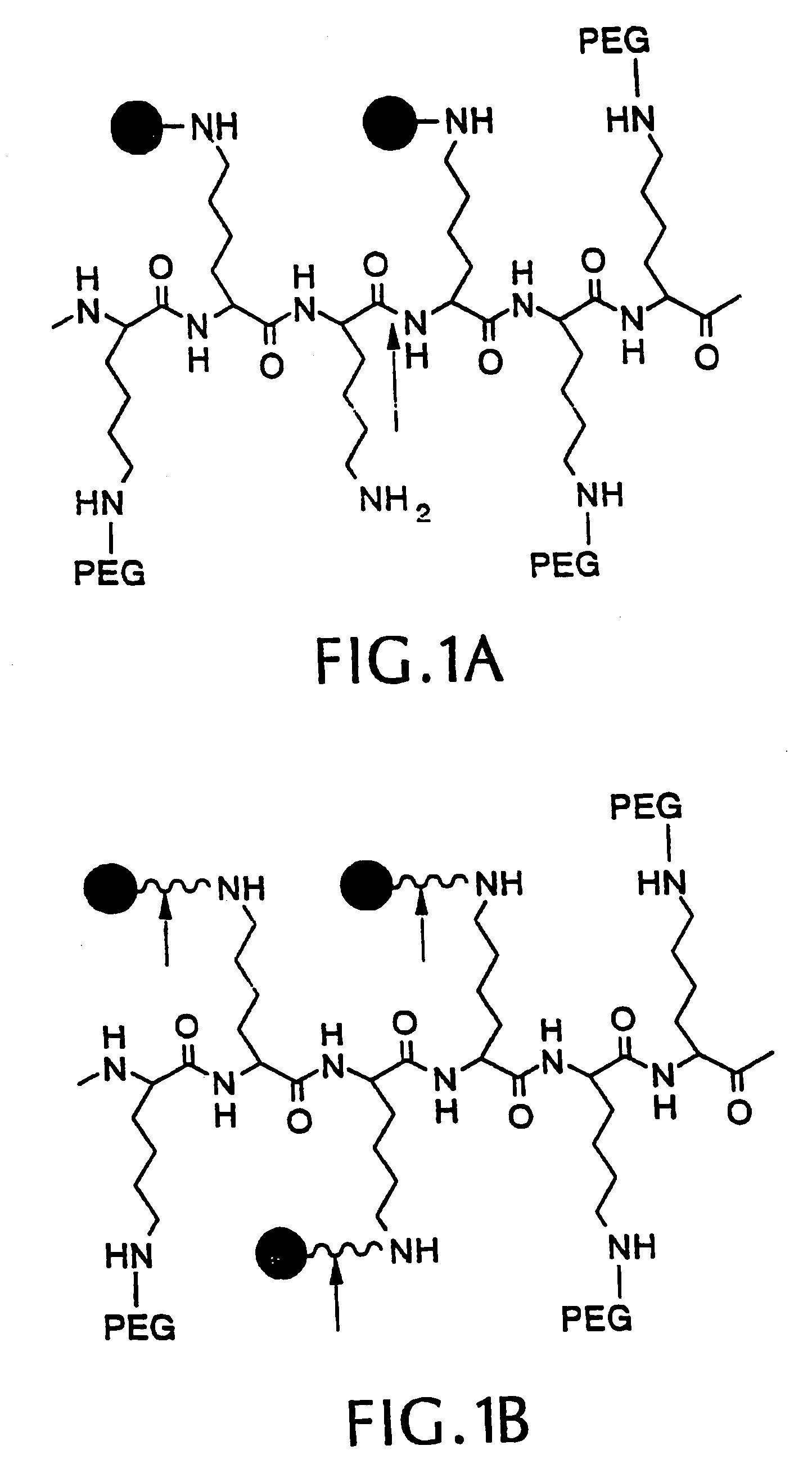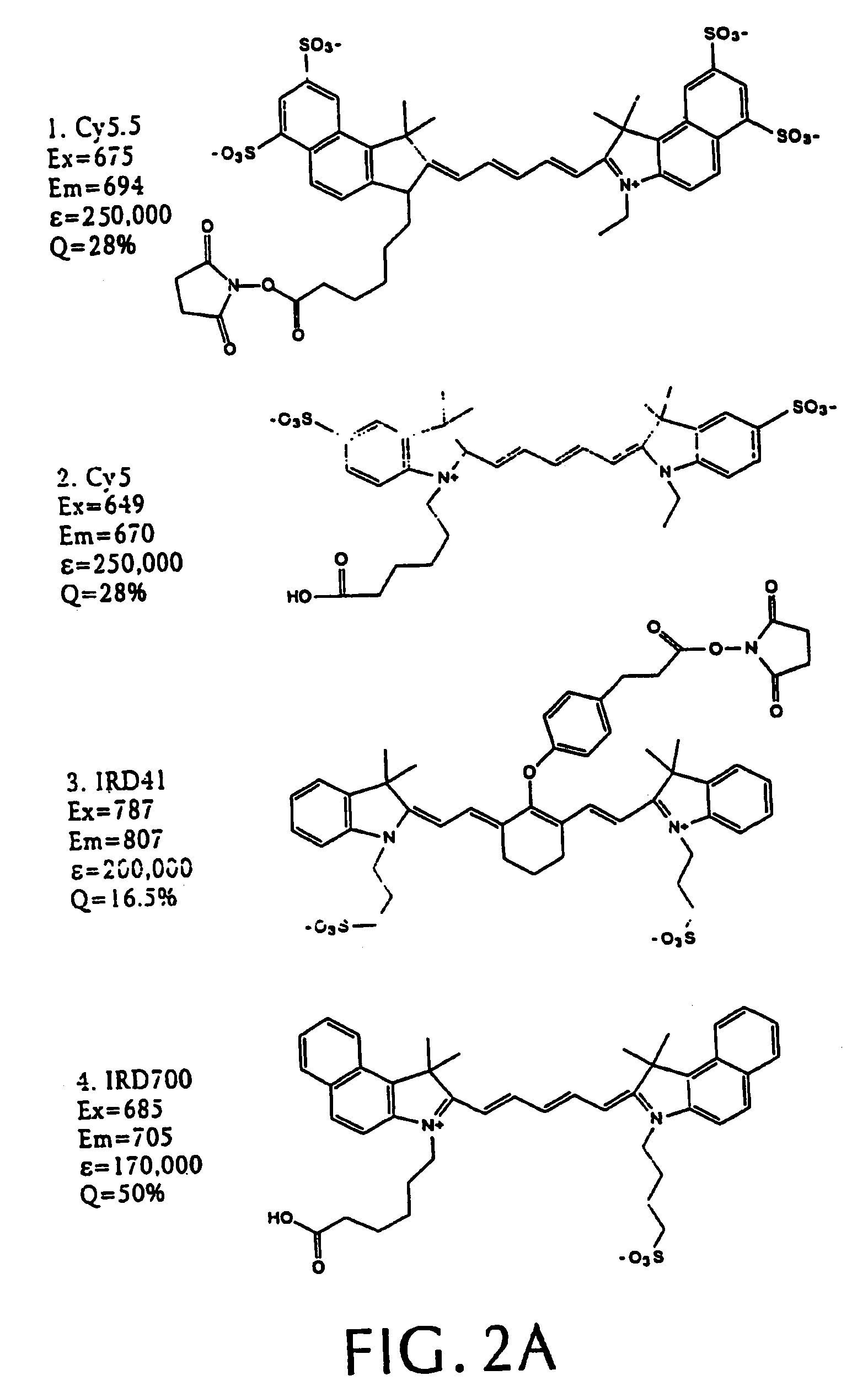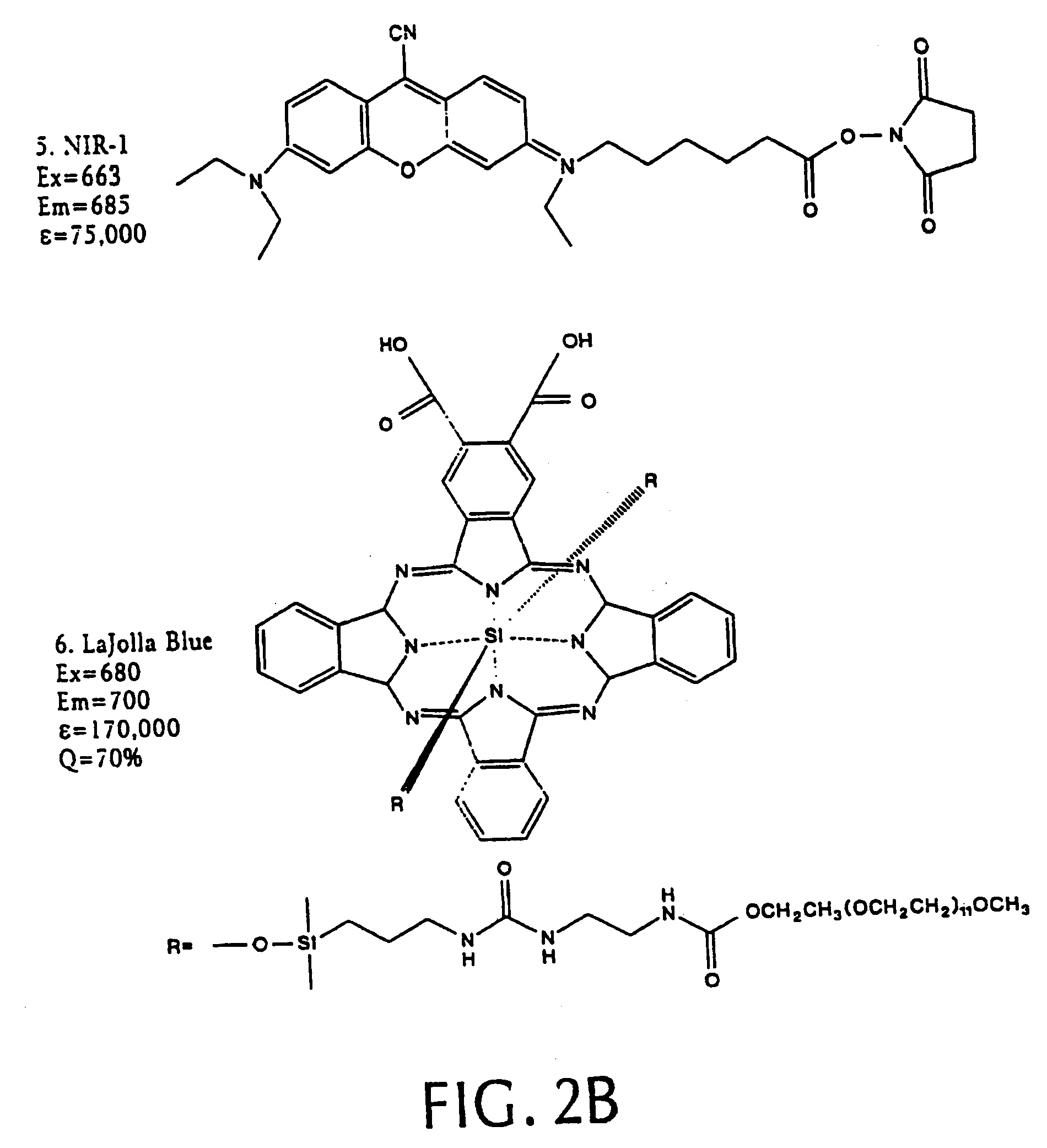Intramolecularly-quenched near infrared fluorescent probes
a near infrared and fluorescent probe technology, applied in the field of in vivo optical imaging, can solve the problems of low target/background ratio, many limitations of conventional near infrared fluorescence probes, etc., and achieve the effect of increasing the target/background ratio
- Summary
- Abstract
- Description
- Claims
- Application Information
AI Technical Summary
Benefits of technology
Problems solved by technology
Method used
Image
Examples
examples
[0067]In order that the invention may be more fully understood, the following examples are provided. It should be understood that these examples are for illustrative purposes only and are not to be construed as limiting the invention in any way.
Synthesis of Near Infrared Fluorescence Probes
[0068]We synthesized three different intramolecularly-quenched near infrared fluorescence probes by conjugating a commercially-available fluorochrome known as Cy5.5 (absorption=675 nm, emission=694 nm; Amersham, Arlington Heights, Ill.) to PL-MPEG (average molecular weight approx. 450 kD). The three probes differed in attachment of the fluorochrome to the polylysine backbone. In a probe designated “Cy-PL-MPEG,” the Cy5.5 was linked directly to the ε-amino group of the polylysine side chains at various densities, which ranged from 0.1% to 70% derivatization of the ε-amino groups. In a probe designated, “Cy-RRG-PL-MPEG,” the Cy5.5 fluorochrome was linked to the polylysine by a a spacer consisting of...
PUM
| Property | Measurement | Unit |
|---|---|---|
| emission wavelengths | aaaaa | aaaaa |
| emission wavelengths | aaaaa | aaaaa |
| excitation and emission wavelengths | aaaaa | aaaaa |
Abstract
Description
Claims
Application Information
 Login to View More
Login to View More - R&D
- Intellectual Property
- Life Sciences
- Materials
- Tech Scout
- Unparalleled Data Quality
- Higher Quality Content
- 60% Fewer Hallucinations
Browse by: Latest US Patents, China's latest patents, Technical Efficacy Thesaurus, Application Domain, Technology Topic, Popular Technical Reports.
© 2025 PatSnap. All rights reserved.Legal|Privacy policy|Modern Slavery Act Transparency Statement|Sitemap|About US| Contact US: help@patsnap.com



